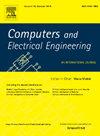Secure blockchain-based IoV architecture integrated with PUFs for secure vehicular communication
IF 4
3区 计算机科学
Q1 COMPUTER SCIENCE, HARDWARE & ARCHITECTURE
引用次数: 0
Abstract
Electric Vehicles (EVs) are now an integral part of Vehicular Ad-Hoc Networks (VANET), which are transformed into Electric Vehicular Ad hoc Networks (EVANET), an intelligent transportation network. Secure authentication and communication play vital roles in creating a trusted communication environment. Existing infrastructure and frameworks have several bottlenecks, such as security vulnerabilities, high computation and communication costs, high storage overhead, and multiple interactions. This paper presents a layered architecture for the Internet of Vehicles (IoV) to overcome the existing limitations. Blockchain technology is integrated with Physically Unclonable Functions (PUFs) and bloom filters to establish secure registration and authentication of network components. A PUFs-based token has also been created for fast authentication handover to support the dynamic nature of vehicular networks. A Device-to-Vehicle (D2V) is also optimised to reduce the computation and communication cost through PUFs and Message Hash Authentication (MHA). A novel Blockchain-based BAN (BBAN) is also proposed to validate the proposed architecture. The proposed system’s resistance is also validated against potential security attacks. The D2V computation cost is improved by 14.16%, the computation cost for Electric Vehicle to Roadside Unit (EV2RSU) initial authentication is enhanced by 87.96%, and handover authentication by 74.36 %. Storage cost is also greatly reduced by 40.65%, lowering the communication cost for handover authentication in EV2RSU by 18%, proving the effectiveness and supremacy of the proposed architecture.
求助全文
约1分钟内获得全文
求助全文
来源期刊

Computers & Electrical Engineering
工程技术-工程:电子与电气
CiteScore
9.20
自引率
7.00%
发文量
661
审稿时长
47 days
期刊介绍:
The impact of computers has nowhere been more revolutionary than in electrical engineering. The design, analysis, and operation of electrical and electronic systems are now dominated by computers, a transformation that has been motivated by the natural ease of interface between computers and electrical systems, and the promise of spectacular improvements in speed and efficiency.
Published since 1973, Computers & Electrical Engineering provides rapid publication of topical research into the integration of computer technology and computational techniques with electrical and electronic systems. The journal publishes papers featuring novel implementations of computers and computational techniques in areas like signal and image processing, high-performance computing, parallel processing, and communications. Special attention will be paid to papers describing innovative architectures, algorithms, and software tools.
 求助内容:
求助内容: 应助结果提醒方式:
应助结果提醒方式:


